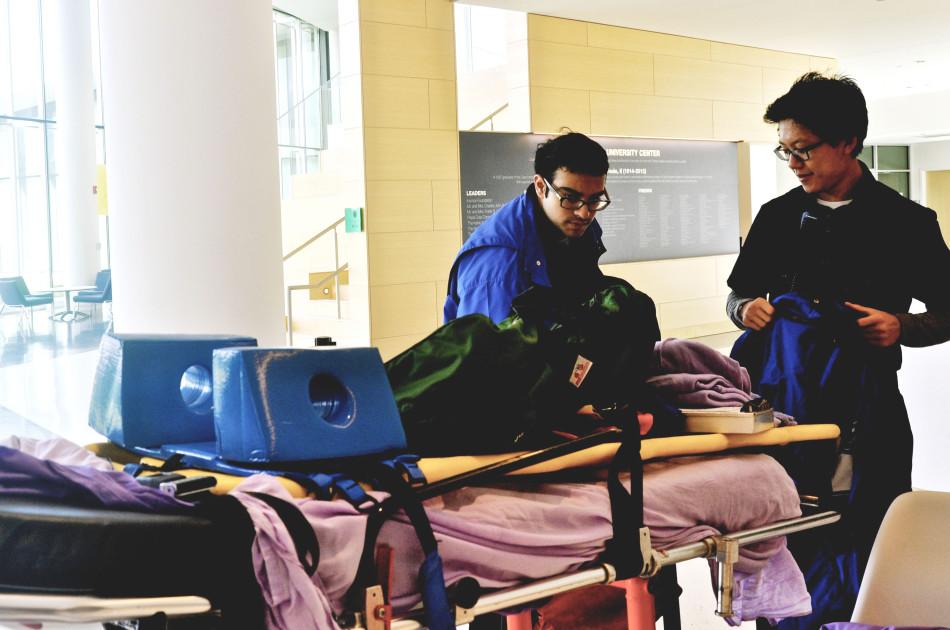Simulated tornado strikes Tinkham Veale University Center
Case EMS practices during mass casualty incident drill
EMS helps students with simulated injuries during their annual mass casualty incident drill.
“We’ve got four severe injuries over here!”
“She’s got a broken bone.” “Which leg is fractured?”
“Miss, stay right over here.” “Sir, can you get up and walk?”
“I can’t breathe.” “I think she can’t breathe.”
“James, who’s under that blanket?”
Early on Sept. 13, the Tinkham Veale University Center turned into a simulated tornado disaster zone. A few dozen volunteers, in various states of mock anguish, lay sprawled around the food court area and outside under debris in the water soaked Frieberger Field. As the rain picked up, the Case Western Reserve University Emergency Medical Service launched its annual mass casualty incident drill.
“It was modeled like an actual emergency,” said Tejas Joshi, a sophomore EMS volunteer who organized the drill with fellow EMT Jeff Rabinowitz. “Getting this practice is the best way to know what to do in a mass casualty incident.”
The rain, while uncomfortable, provided an added layer of realism to a drill designed to simulate a severe weather event. The Case EMS pulled volunteers out from under fallen branches and collapsed tents, lifted them onto stretchers and brought them inside for additional triage.
To make the drill feel realistic, the volunteer victims wore makeup to simulate injuries. They also received a card that listed their ailments, which ranged from a minor allergic reaction to a broken leg to a serious back injury to PTSD. It not treated fast enough, some of the volunteers would “die”.
With 40 volunteers and only five Case EMS responders, along with representatives from the Cleveland and Cleveland Heights Fire Departments and the University Police, not every victim “survived”. But, realistically, in an actual mass casualty incident with limited resources and time, some people may die.
In the name of realism, a CFD firefighter even roped me, an uninvolved observer, into the situation, tasking me with helping two EMS members move ‘dead’ volunteers underneath white blankets from the red flag, signalling serious injuries, to the ominous black flag several yards away.
“In a real situation, if you are uninvolved and observing, you are going to help,” the firefighter said.
For the Case EMS, the drill provides a valuable opportunity to work on the intense level organization that is required in a mass casualty situation.
“The biggest challenge is communication,” said Joshi. “The drill is definitely good practice.”
The Case EMS is entirely volunteer and student-run. According to Joshi, the organization has grown a lot over the past few years, even recently acquiring a second ambulance.
“We are growing and always looking for new members,” said Joshi.
With events like the mass casualty drill, Joshi hopes that EMS will have the skills to deal with the unthinkable.


